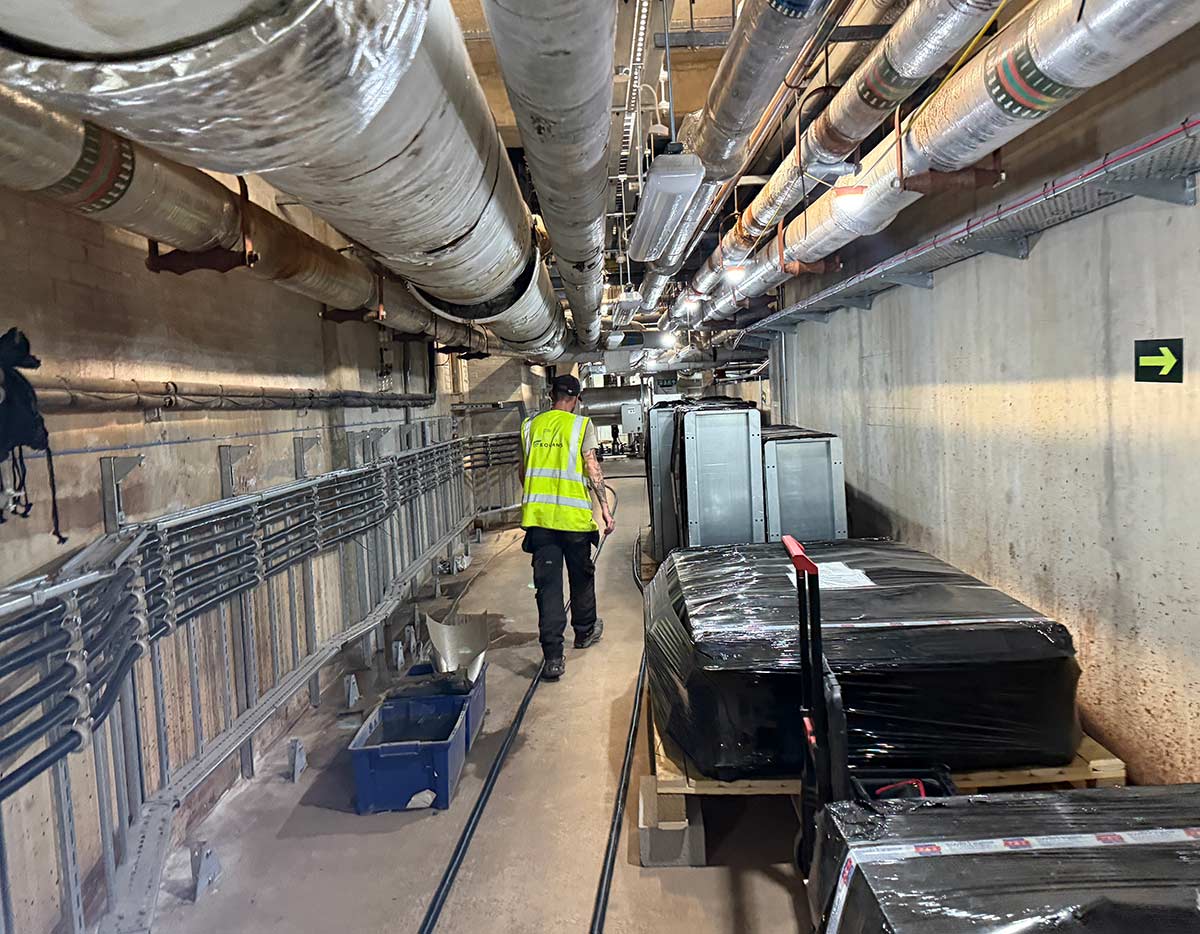Listed Building Waterproofing
Get in touch

Our historic buildings credentials
Trace have extensive experience of waterproofing within historic buildings, we proposed and authored the new guidance relating to dealing with such structures, within the 2022 revision of British Standard 8102 protection of below ground structures against water ingress, the principle waterproofing design guide employed in the UK.
Expertise and experience in the design of waterproofing for listed buildings.
Trace retain a register of all the listed buildings which we have worked on to date, this record details over 570 buildings.
Note: Structural waterproofing work must not be progressed within a listed building, without obtaining listed building consent from the Local Authority and it is recommended to involve Conservation Officers at the outset.

Solving waterproofing issues in historic buildings
Holistic
True of any basement, however a holistic approach is particularly important when dealing with listed buildings, all factors which could influence scope for water ingress must be considered.
Pragmatic
Practical solutions are required, but efforts must be made not to detrimentally affect the value of such buildings for future generations.
Reversible
Systems should be designed which are 'reversible', meaning that it is practical to remove that system in the future, should that ever be required. This generally precludes any form of adhered internal barrier tanking.
How we stay ahead of changes in listed building guidance
Previous BS8102 design guidance, for understandable reasons errs on the side of caution when considering structures below ground. Designers have to assess the nature of a site (how wet is it), but then even if dry, you still ALWAYS have to consider the risk that groundwater pressure will come to bear.
This is no different in listed structures, however to achieve the right environmental grade (how dry it needs to be) for say.. habitable usage, this could promote a situation where all historic features are covered, to ensure a dry environment - not always ideal within listed buildings. Our revsions to BS8102 promote a balanced approach.
Preservation of historic buildings
Leaving exposed features within a habitable listed basement may result in some degree of visible dampness, or even have scope for water ingress, but this can usually be managed. It is for Conservation Officers to consider and approve, but an important aspect from our perspective is having the discussion with the client about such implications.
As a rule we can preserve features whilst also maintaining a high standard of finish, as is evident within the example opposite, a building originally believed to have been used as a Knights Templar chapterhouse and of considerable age.
Seen here is a residential conversion of a cellar space to kitchen areas. Our waterproofing cellar conversion was placed withing all listed building elements including flooring, foundations, brickworks and timber,


Seen here is the Minto & Turner Mill - a restored, Grade II listed Victorian cotton warehouse.
Our case study can be found here.
Working with brickwork and all structural aspects

Within the example below, note how the membrane is terminated at external ground level in areas to maintain some of the feature brickwork, and that the system is localised to address the walls (which were the issue, with this being refurbed as a restaurant).
A great deal of work went into obtaining consent for this scheme, working with the Clients Building Surveyor and consent Consultants to get to the point where work could progress.
Record of condition
This may be required in structures with grade 2* or grade 1 listings, these buildings are of higher status and represent less than 5% of all listed buildings.
A record of condition from a waterproofing perspective is in respect of the dampness present within the space. In strucures below ground the extent of moisuture is something which can and does vary over time, but identification of patterns of dampness can be useful in assessing whether any other factors are contributing to the conditions present below ground.

A holistic approach
BS8102 guidance advises an assumption of risk that groundwater pressure will always come to bear on any structure below ground. We feel that this can sometimes encourage disregard of other factors which can influence the degree of water present within the ground. Examples such as leaking/defective drains, rainwater goods, external finishes and rate of surface water infiltration. It is a bit blunt to say it, but if you have to assume risk of pressure coming to bear anyway, why think so much about external factors, why not just design for pressure coming to bear anyway?
There is some sense in this from a pure basement waterproofing perspective, but it is not ideal, it is not holistic. Not least for the preservation and upkeep of the structure, it is sensible in listed buildings to check drains (for example) and ensure that they or other factors are not causing or exacerbating issues in parts of the structure below ground, particularly if maintaining exposed features as per the examples above.

A note regarding lime and ventilation
Much is said about lime as the material of choice for use in listed buildings, and it can be employed for a variety of uses from plasters to mortars to renders. As a material it can be vapour permeable, meaning that walls containing capillary moisture, can lose this through evaporation through or from a lime plaster (for example). Therefore, it can in theory be used to manage capilary moisture present within walls above ground, although it does have limitations in that aggressive salts where present can cause significant failure in a lime system.
Within structures below ground there is always a risk that the ground becomes saturated and hydrostatic water pressure can come to bear. In this eventuality the result (if nothing is in place to prevent), is liquid water penetration. There are simplistically two ways to prevent groundwater ingress in an existing structure, one is to employ a cavity drainage system, the other is to apply impermeable coatings to the internal face of the structure to try and block water out.
Water moving through a structure from outside to inside, will bear upon any internally applied coating, pushing that coating AWAY from the substrate to which it is applied. This is referred to in waterproofing as a 'negative pressure'.
Materials employed internally, both have to form a very strong bond with the substrate, and also be strong in their own right, sufficient to hold back the weight of water.
To achieve a strong bond, it requires a good 'key' and mechanical preparation of substrates such as grit/sand blasting, can be employed to clean off what might be present - paint and whitewash for example. Hardly sympathetic in a listed building. To obtain strength barrier tanking materials are usually cementitious (based upon modern 'portland cement') and also generally unacceptable for application in a listed building.
Lime plasters and renders do not have requisite strength and should not be employed as barrier based waterproofing systems.
All of this being said, the requirement for waterproofing is driven by usage, what level of investment a Client will make in a space, and what the implications of flooding would be. It is common sense, if you want to create something like the below (was just a painted brick wall basic cellar), then it is prudent to consider well designed and installed waterproofing by a compentent Contractor with the knowledge, experience, insurances etc., that can guarantee a dry space.
Similarly, enhanced ventilation can improve conditions within a damp space but will not prevent water ingress. If the space is only employed to store very little or items not sensitive to water, then you don't really need extensive waterproofing. It is common sense. Sometimes in older structures we just install localised measures to facilitate better storage, horses for courses as they say.

“The whole team at Trace were brilliant. Fantastic and clear communication at the start and so professional and helpful on site.”
N. Sugden
Mitchells & Butlers
Experts in Waterproofing Design & Construction
North-West leading Waterproofing experts
Follow us
Winning awards & Accreditations







.webp)
Experts in Damp & Remedial Solutions
Structures above ground may be subject to issues of dampness for a variety of reasons. Key to achieving a resolution, is in understanding the nature and cause of the dampness.
Find out more














.avif)







.avif)
